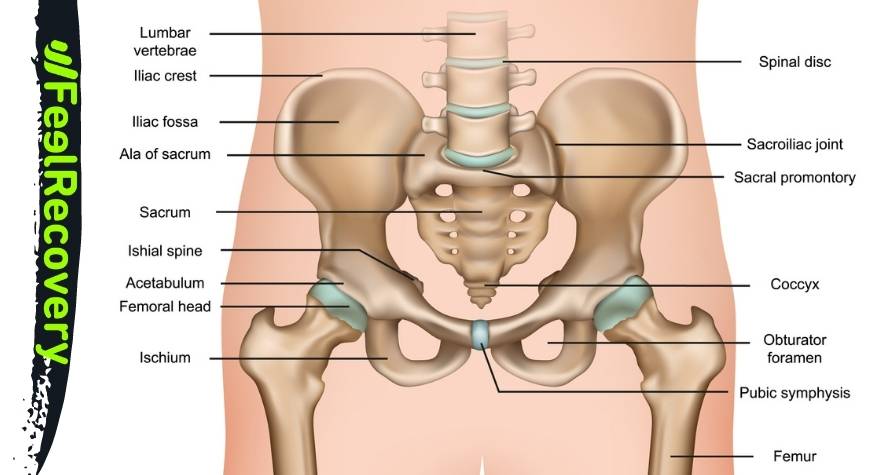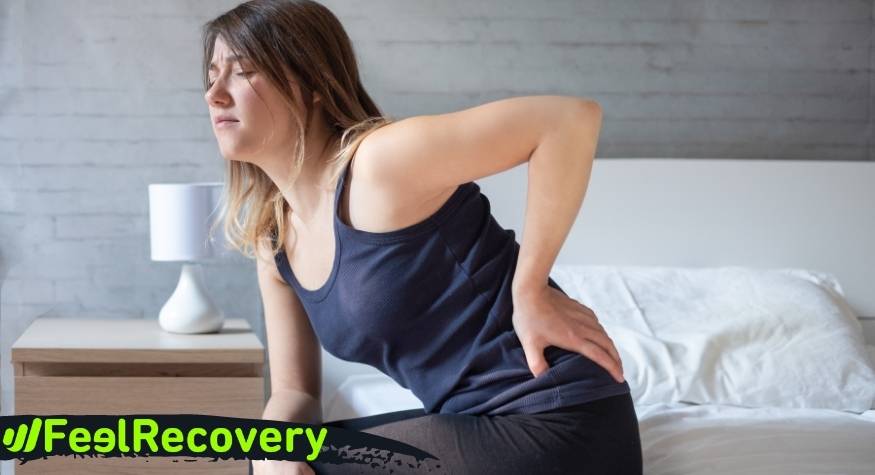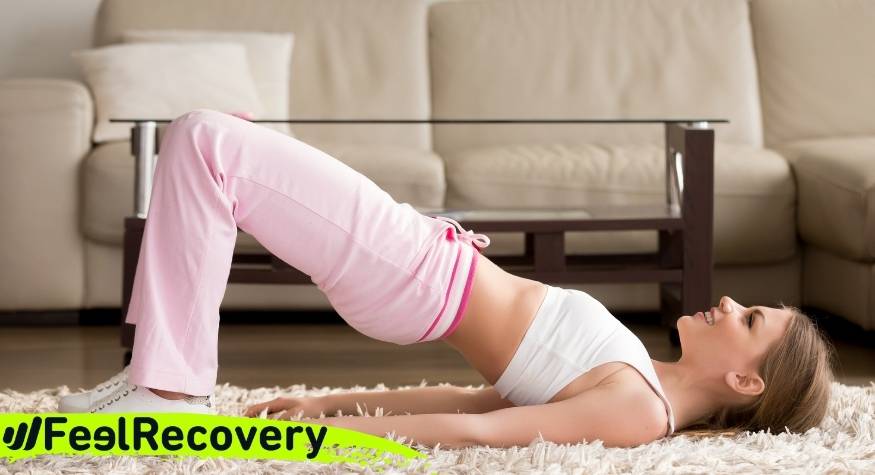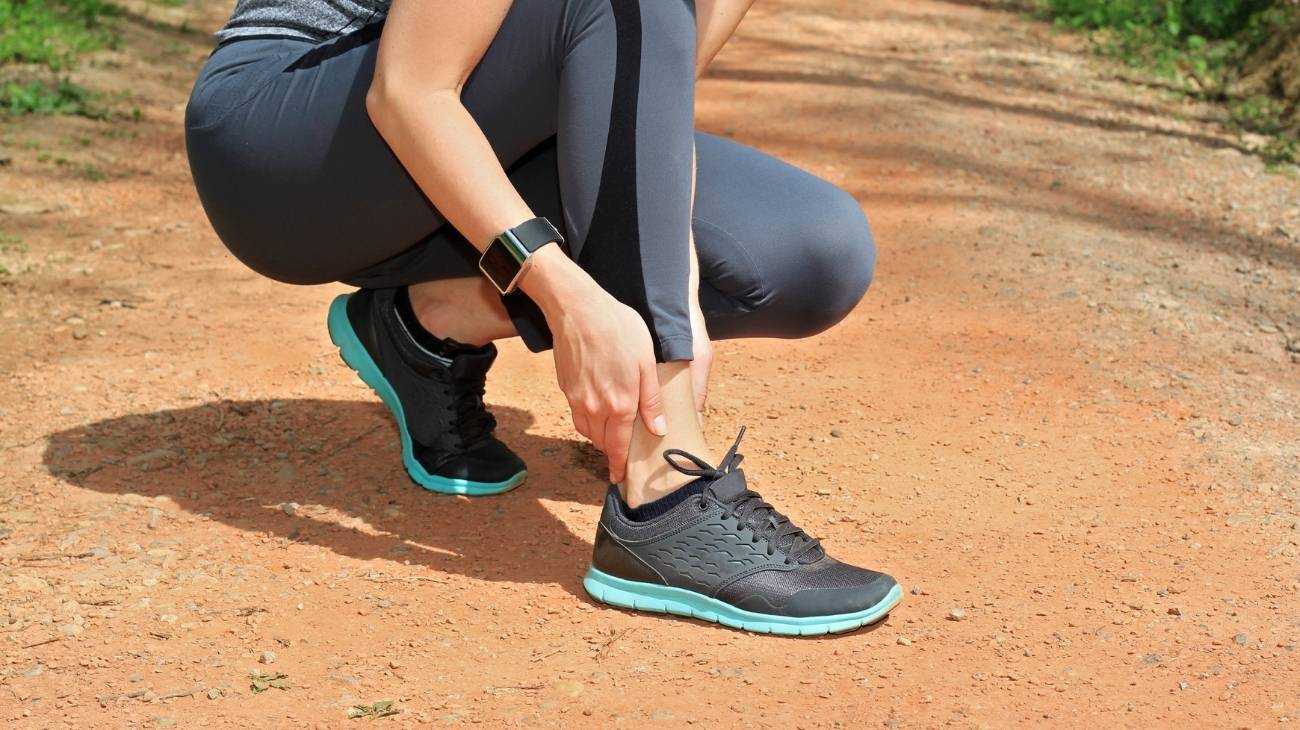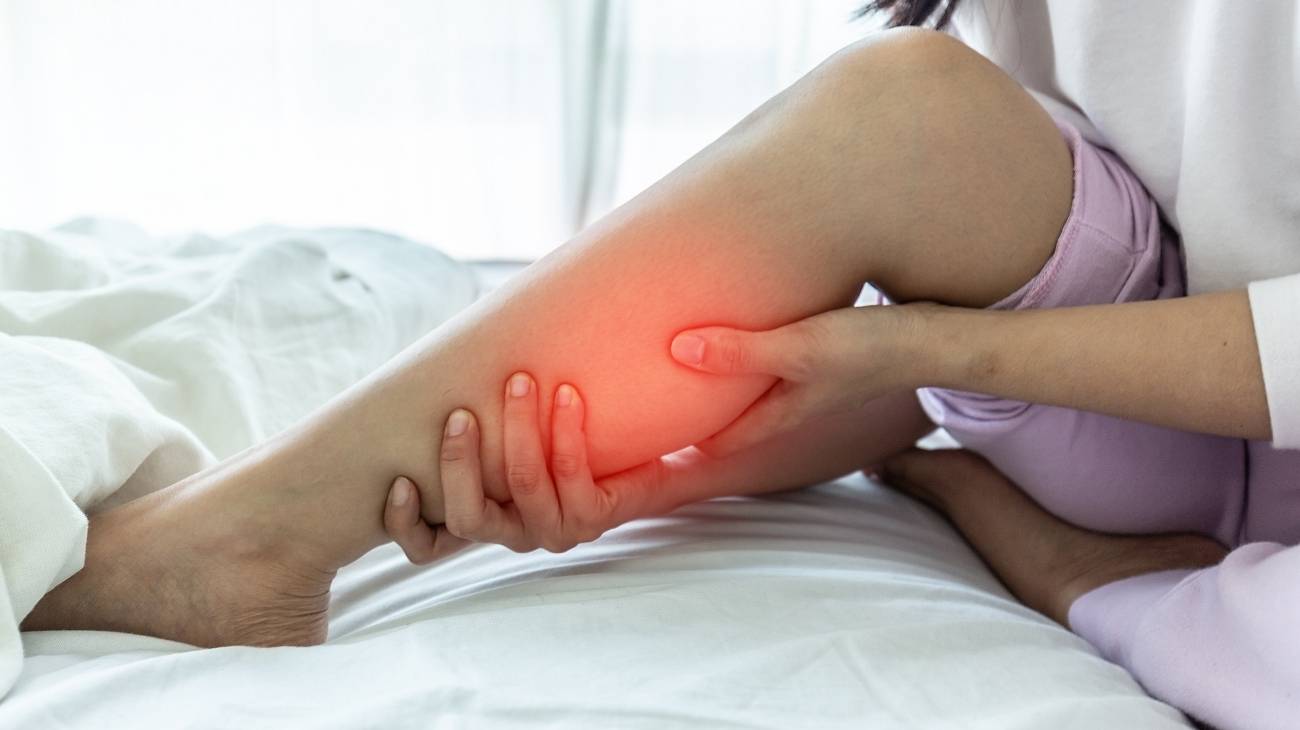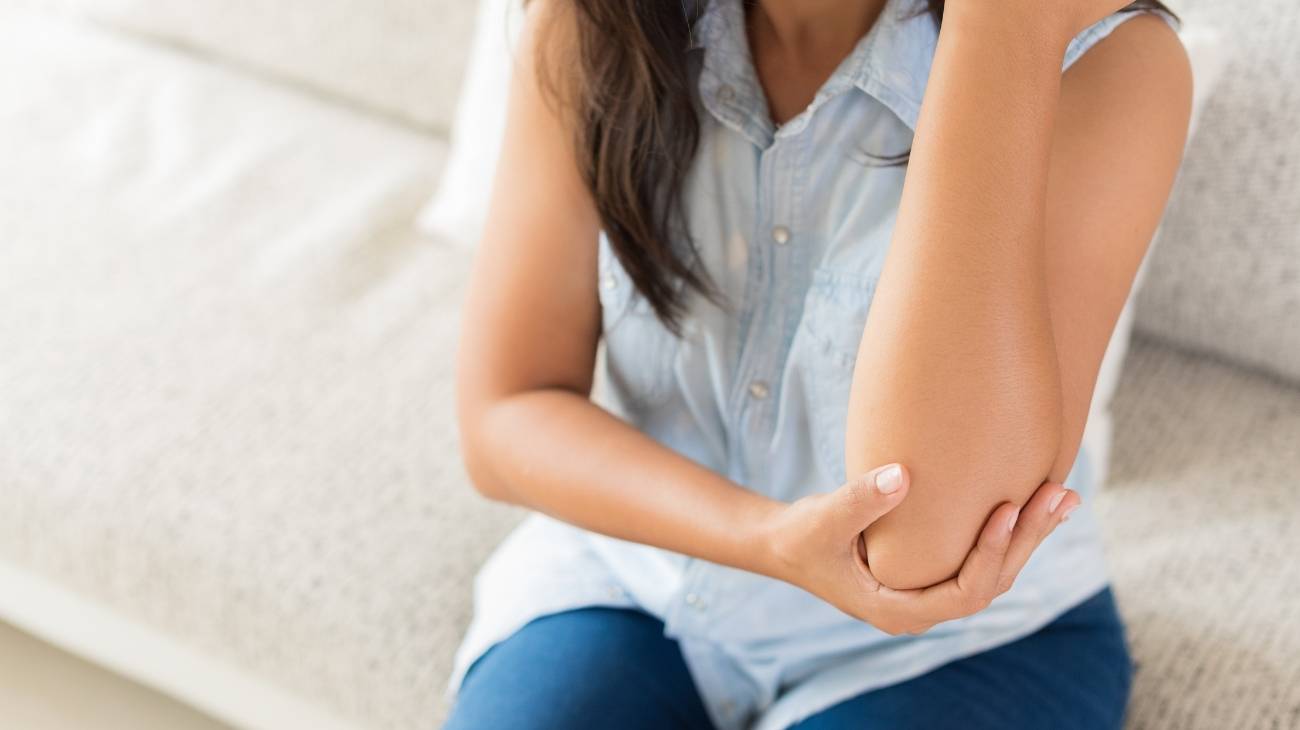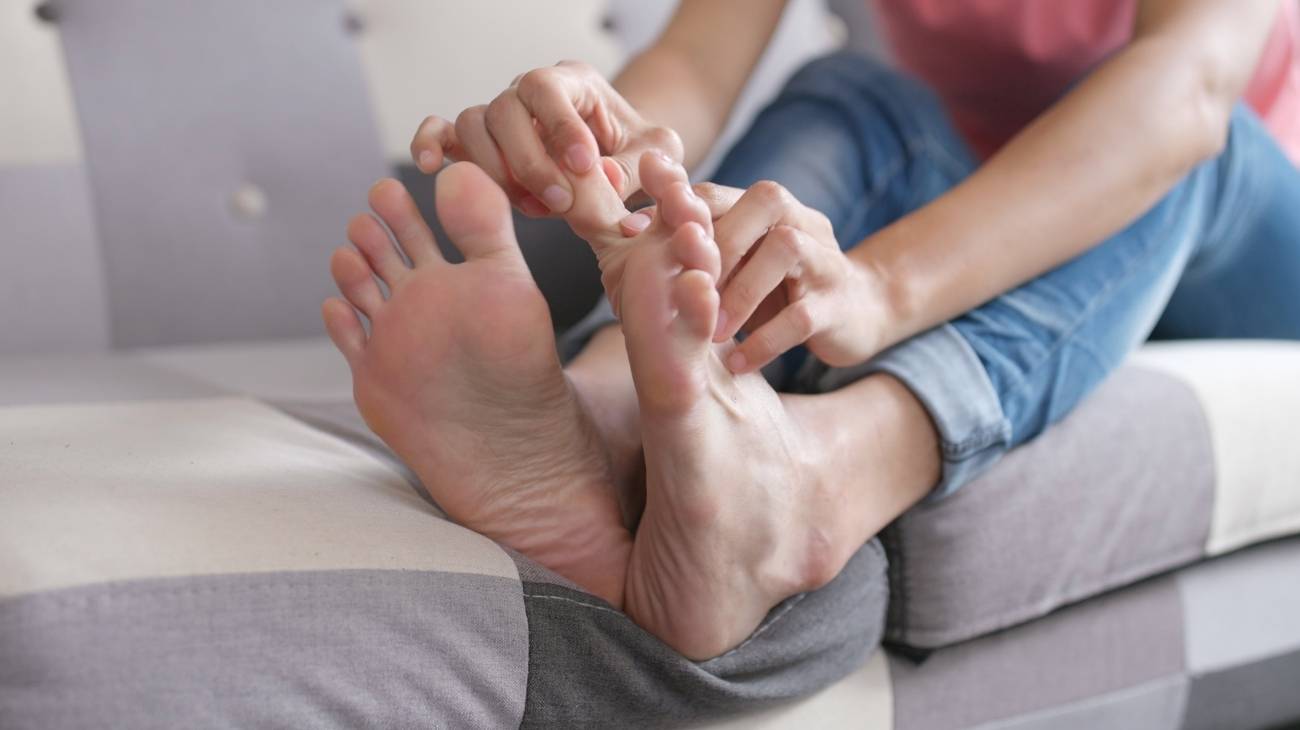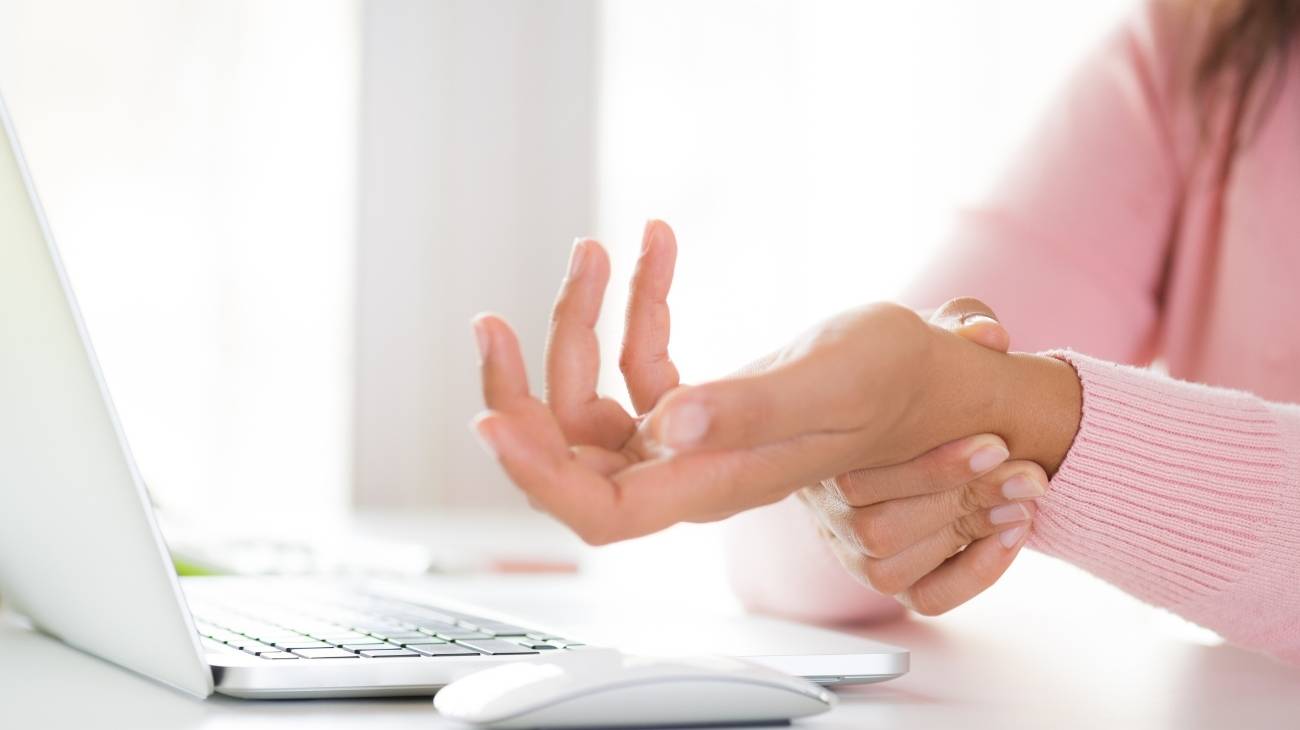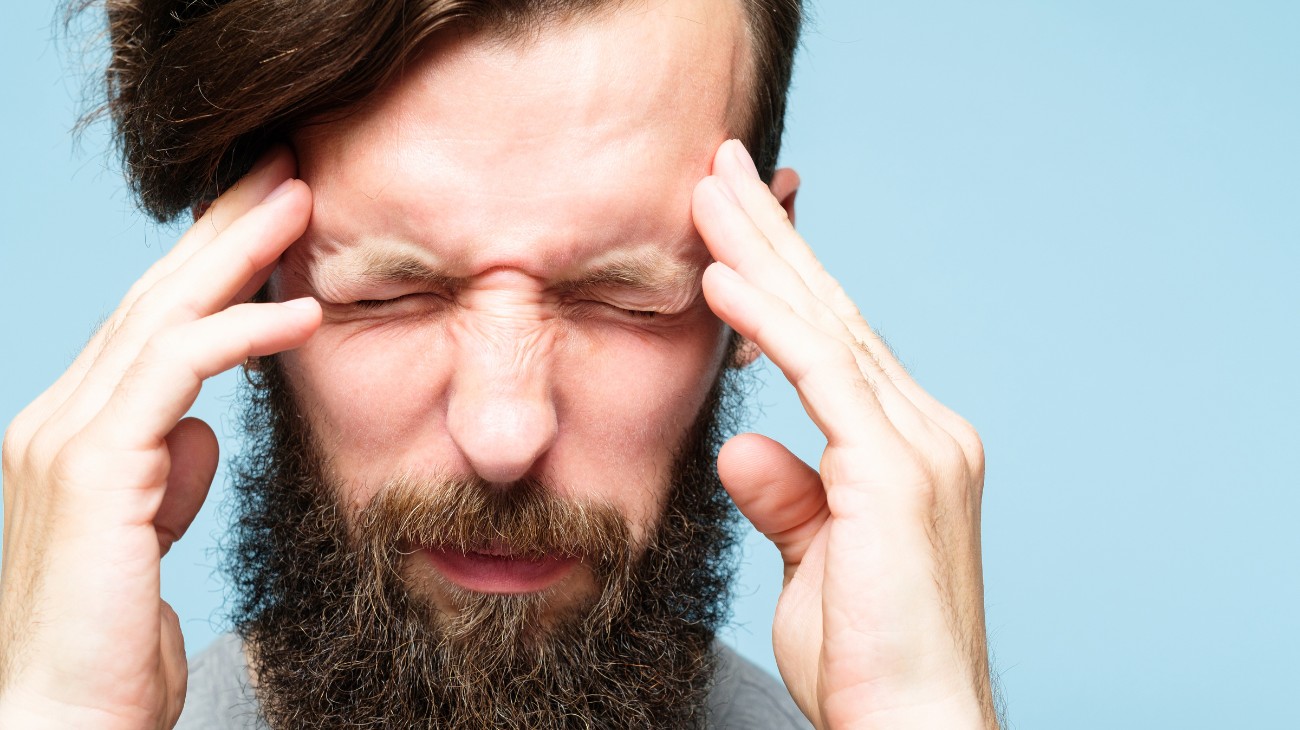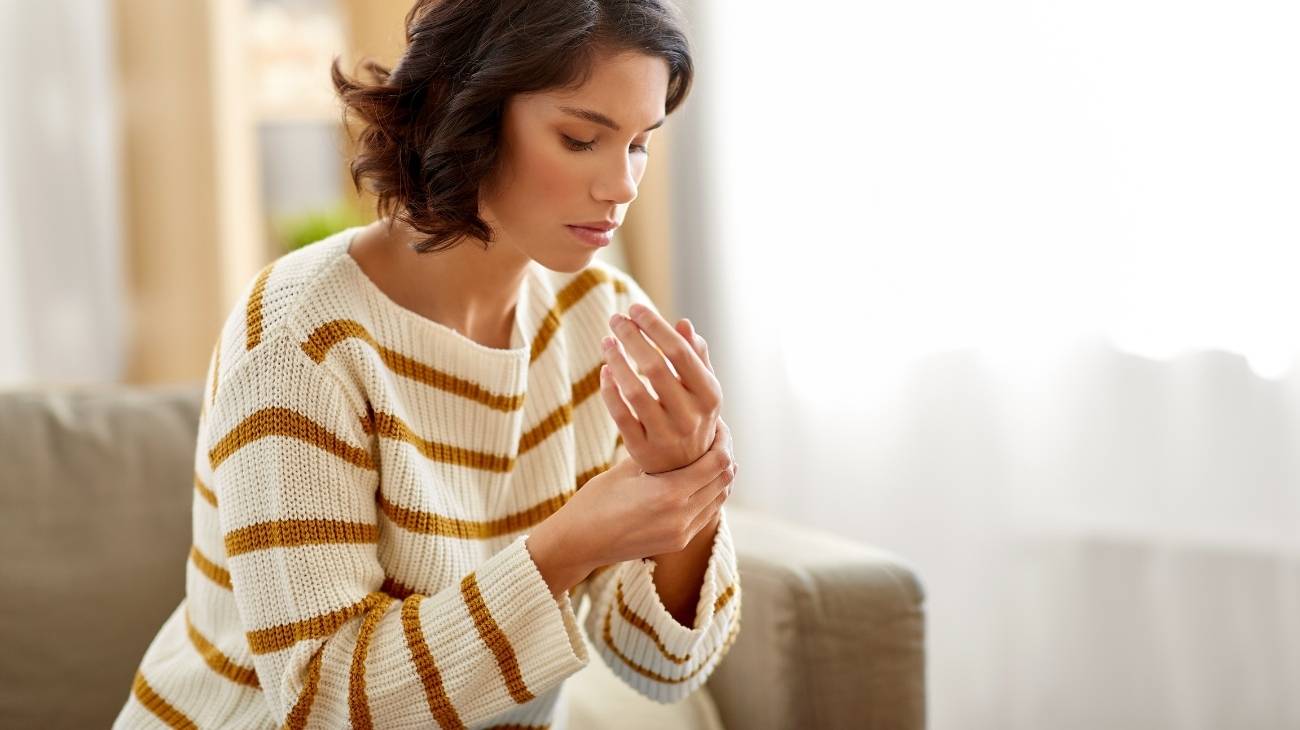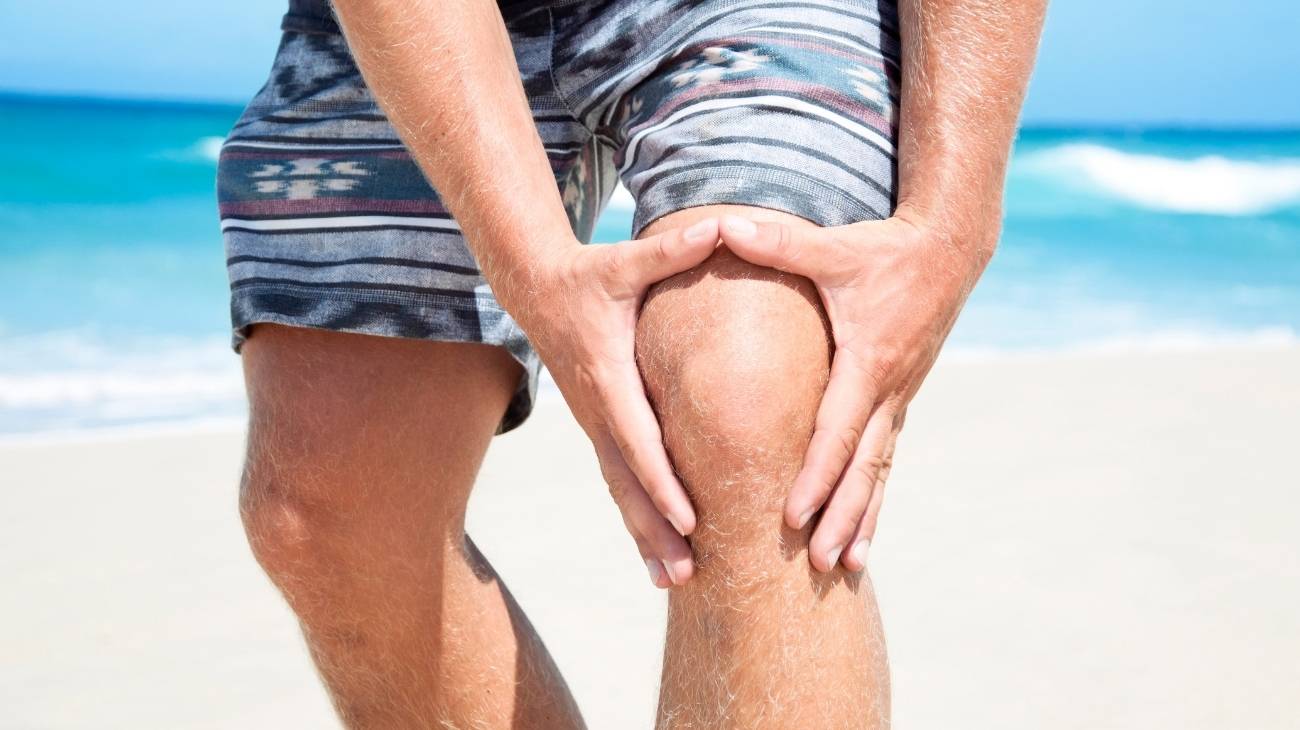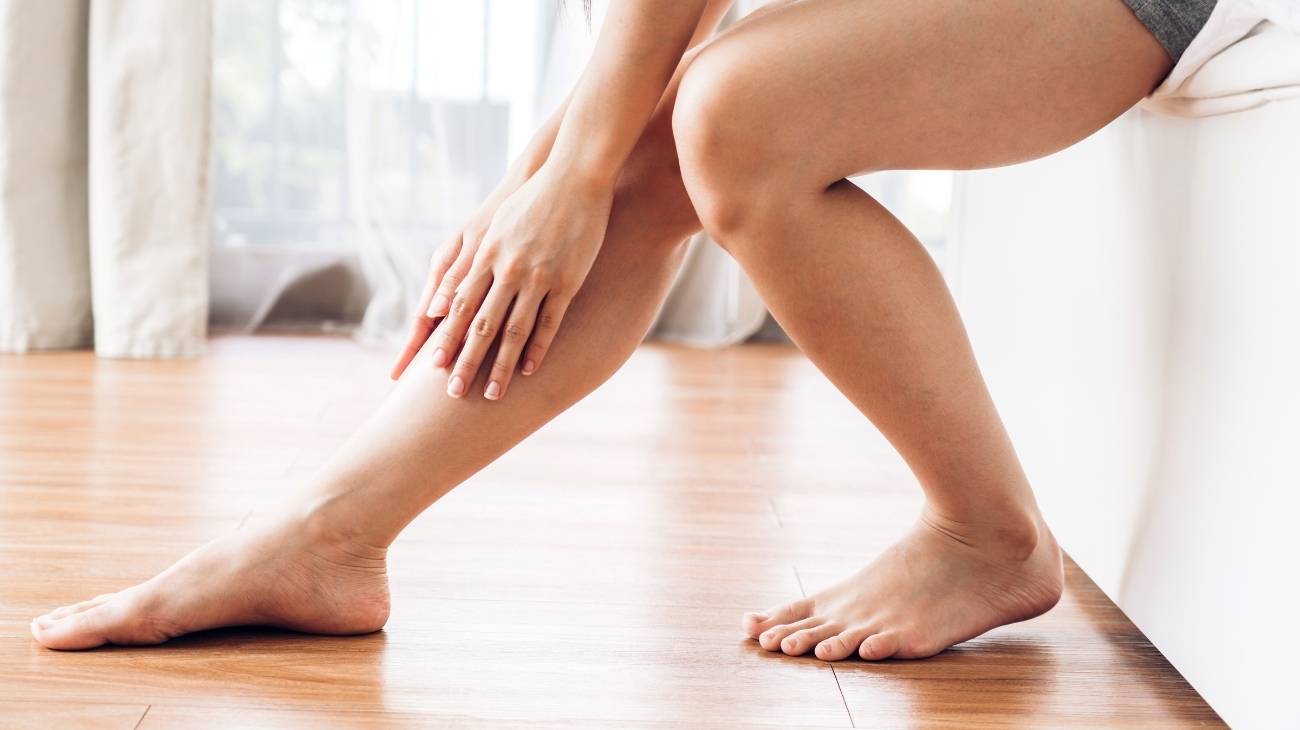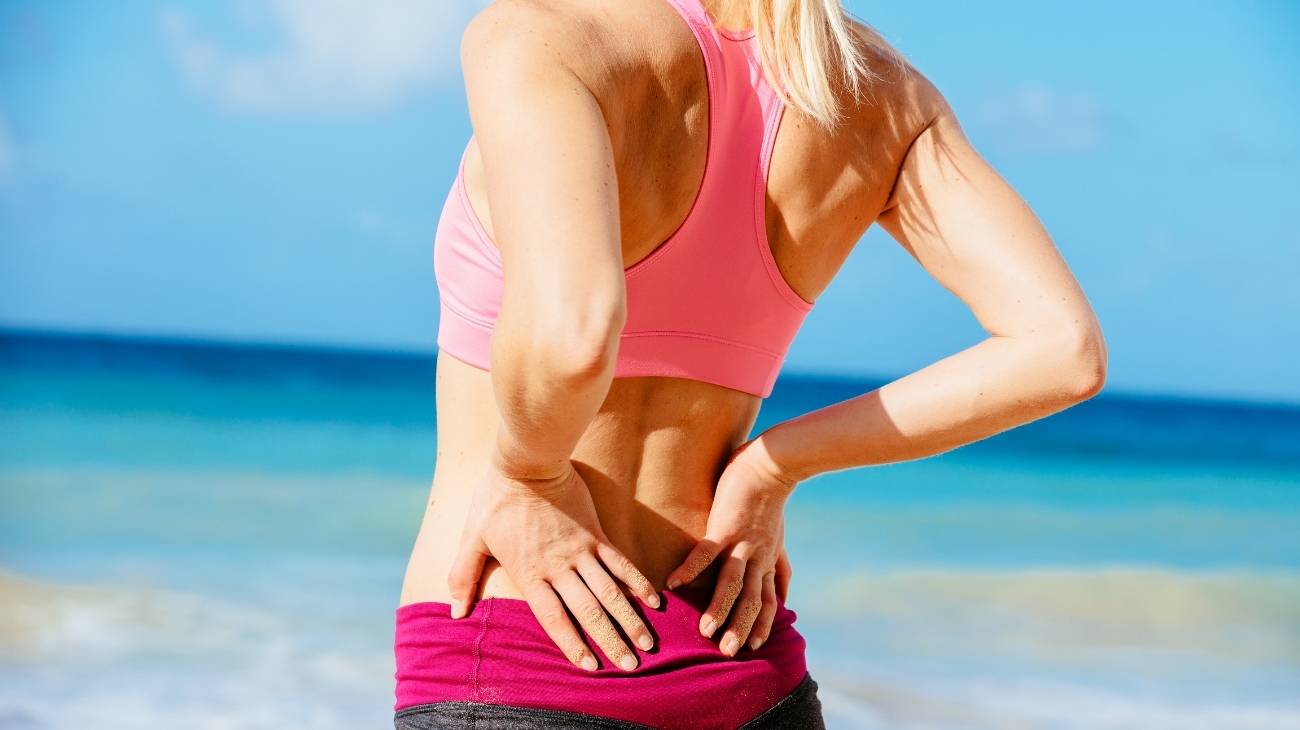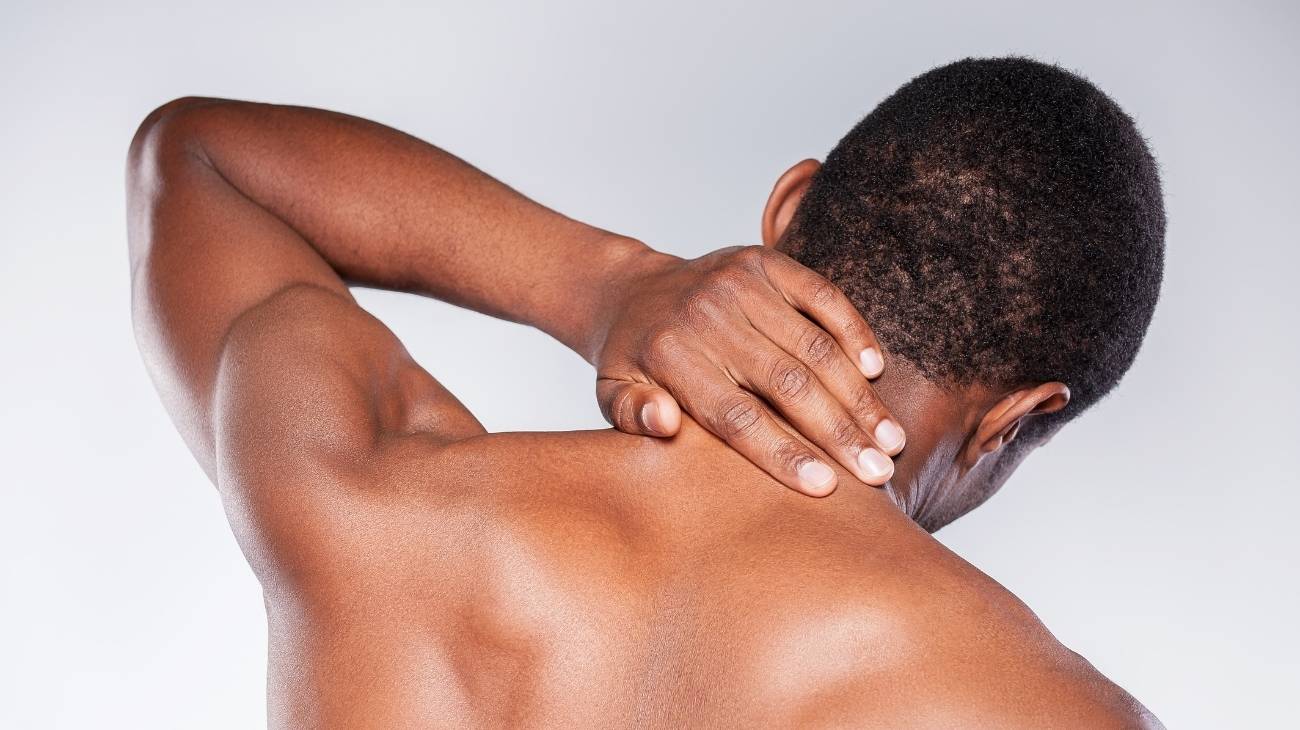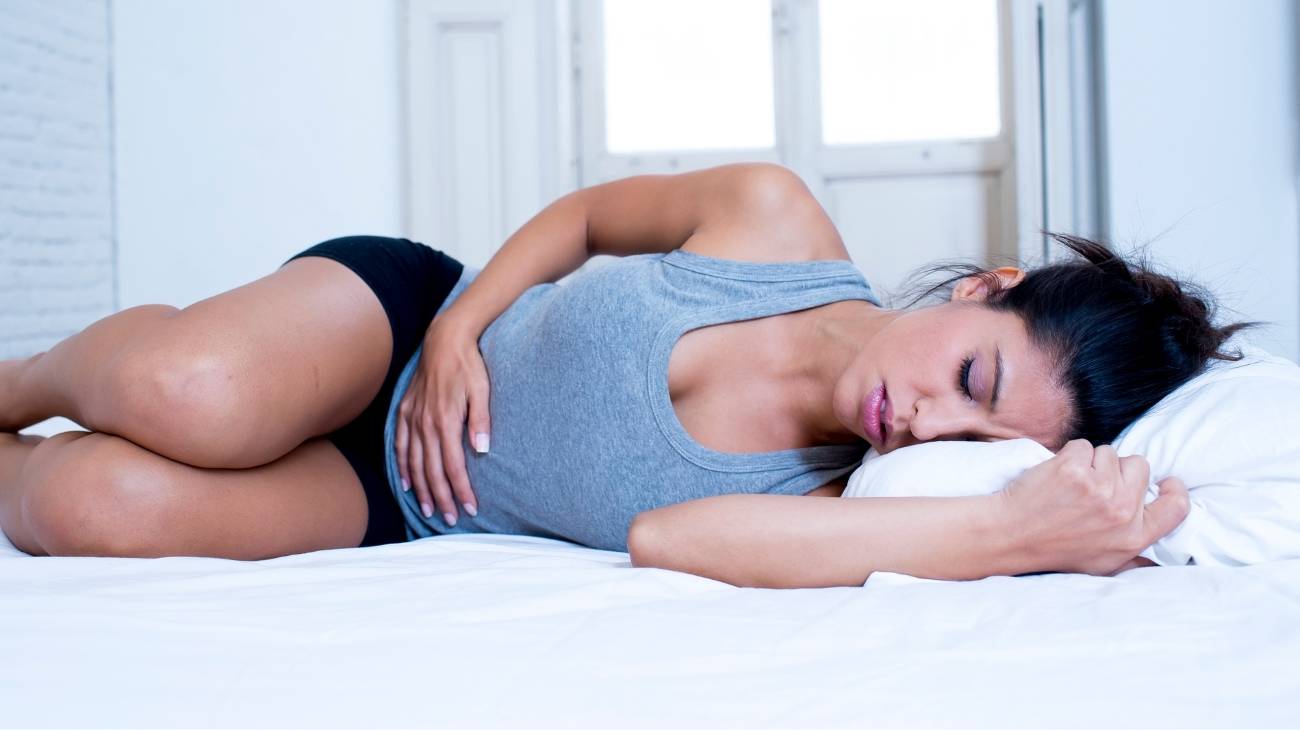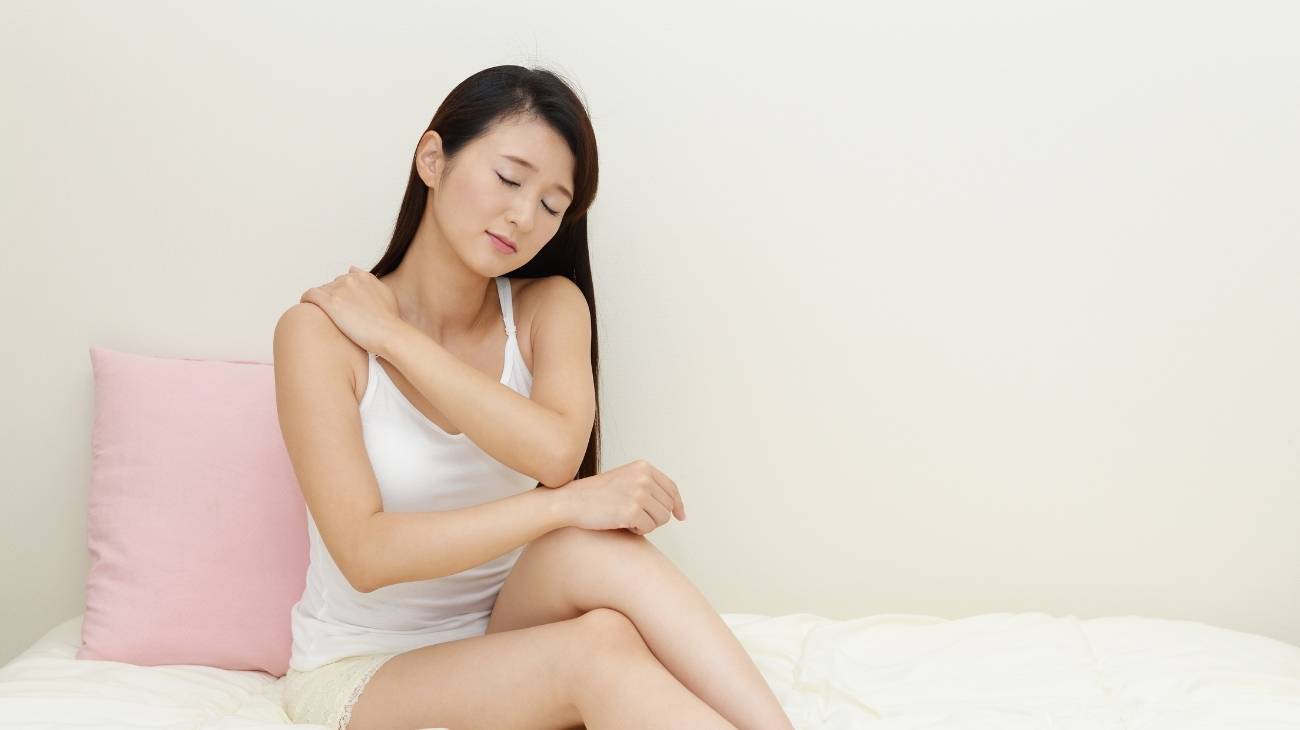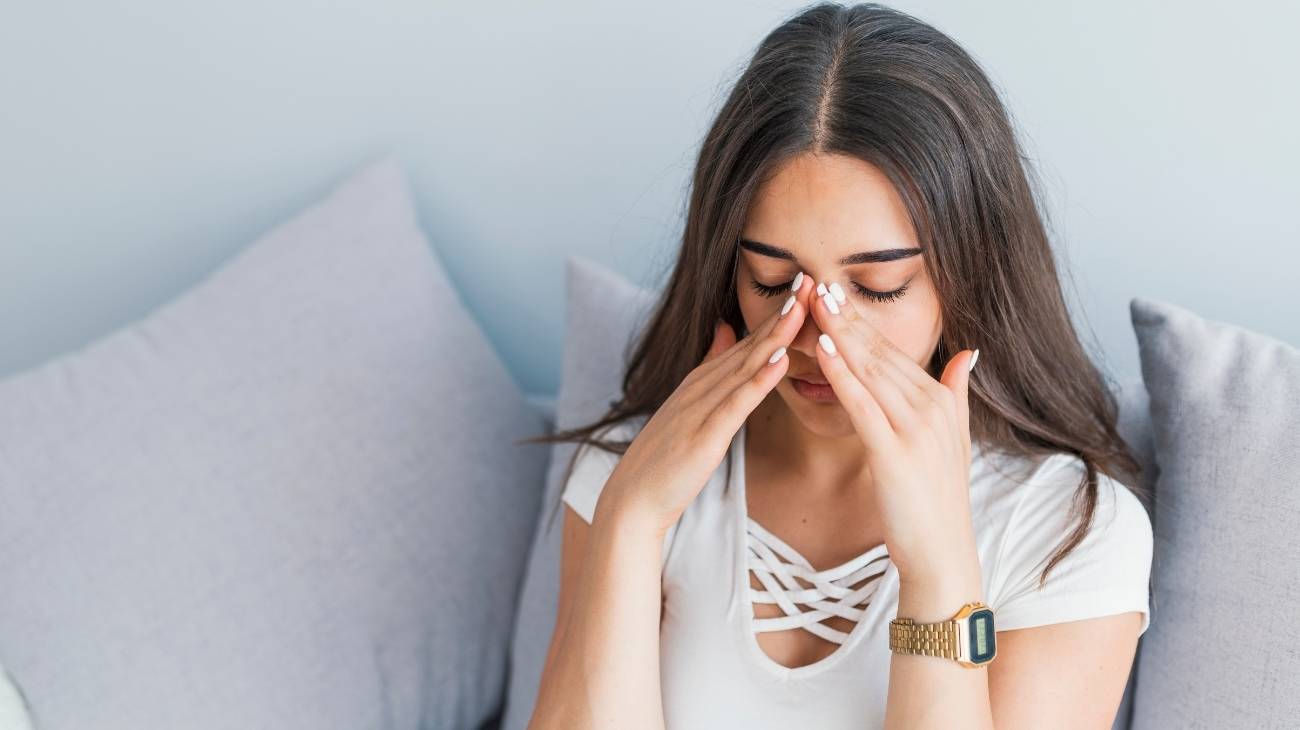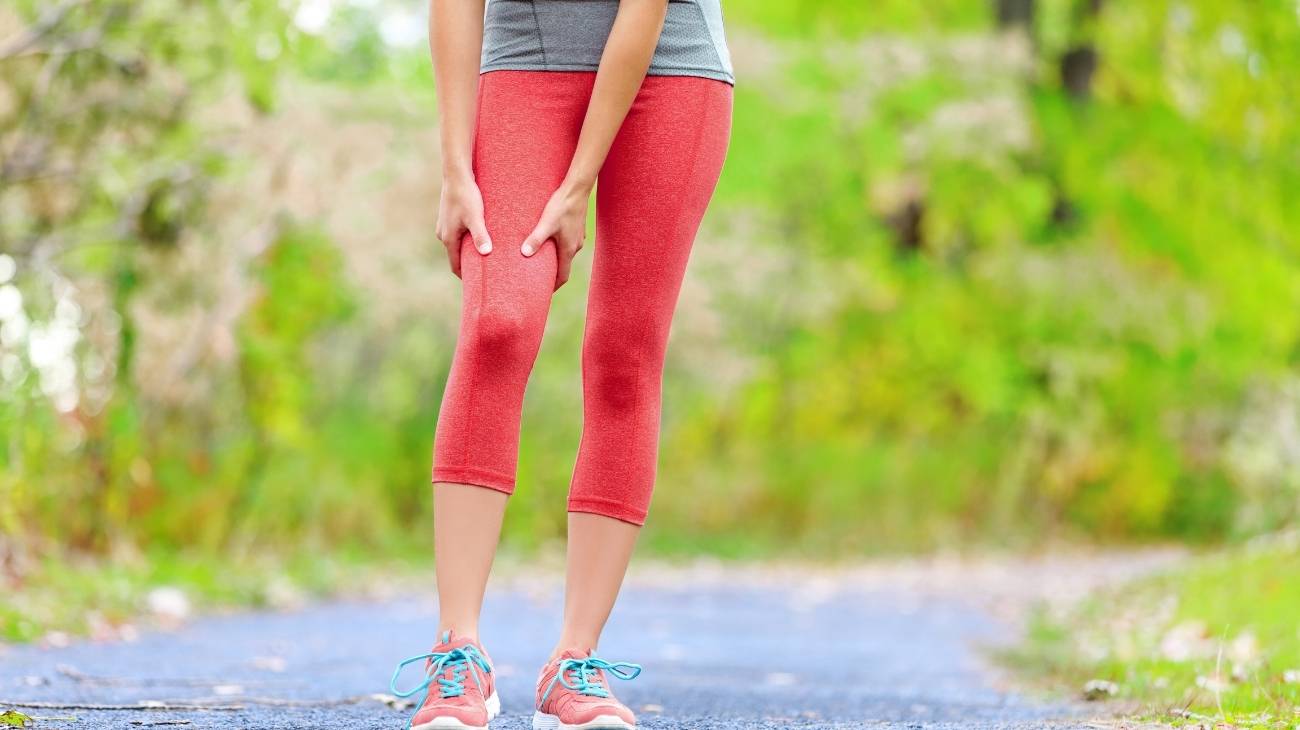- What is hip pain and how to identify it?
- Best products for hip pain relief
- What causes hip and buttock pain and what are the causes?
- What kind of diseases can cause pain in the hip joint?
- What are the symptoms and types of pain that make us think we have a hip injury?
- How can we relieve hip and leg pain through complementary and non-invasive therapies?
- How to apply the RICE therapy step by step to reduce hip pain?
- How to prevent future pain in the hip, belly and lower back?
- Why should we avoid pills and injections to relieve hip and groin pain?
The hip is a large and complex area of our body very present in any activity, so having a sore hip can limit us quite a lot. Does your hip hurt? We are going to help you identify this pain and we will show you what causes it.
If your hip joint hurts and you want to know how to put an end to it, read on and you will be able to avoid it happening again. We give you all the keys to treating hip pain and other associated symptoms, as well as its prevention.
What is hip pain and how to identify it?
Pain is a more or less intense discomfort that we can feel in any part of our body, both internally and externally. This includes from the skin, which can be injured or become sensitive and numb, to other internal organs, tissues and bones, which cause us to suffer from many other symptoms depending on the problem we suffer from.
When we talk about hip pain, we refer to the area that includes the pelvis, the upper femur, the groin and even the sacrum. In the hip we can refer to a really wide range of symptoms, which is logical considering that it is a large area that includes important bones and joints, as well as being closely related to the spine and the root of many nerves.
Hip rotation with pain can be one of the most obvious ways of knowing that we have a problem in this or nearby areas. Clicking in the hip joint, difficulty in standing or walking and other symptoms should be clear identifiers. Lumps or simple swellings reveal that we have a moderate or severe problem and the pain is a direct consequence of this.
In general, unless it is obvious, palpation is often unreliable; we may have a problem and not be able to recognise it simply by touching it.
Best products for hip pain relief
Bestseller
-
Acupressure Mat and Pillow (Black/Gray)
£44,95 -
Acupressure Mat and Pillow (Green/Navy)
£44,95 -
Acupressure Mat and Pillow (Pink/Bordeaux)
£44,95 -
Acupressure Pillow (Black/Gray)
£21,52 -
Acupressure Pillow (Green/Navy)
£21,52 -
Acupressure Pillow (Pink/Bordeaux)
£21,52 -
Back Support Belt (Black)
£29,95 -
Back Support Belt (Green)
£29,95 -
Back Support Belt (Pink)
£29,95 -
High Density Foam Roller for Muscle (Black/Gray)
£24,95 -
High Density Foam Roller for Muscle (Green/Navy)
£24,95 -
High Density Foam Roller for Muscle (Pink/Bordeaux)
£24,95 -
Ice Massage Roller Ball (Black)
£34,95 -
Ice Massage Roller Ball (Green)
£34,95 -
Ice Massage Roller Ball (Pink)
£34,95 -
Microwave Wheat Bag for Back Pain Relief (Extra Large) (Hearts)
£25,50 -
Microwave Wheat Bag for Back Pain Relief (Extra Large) (Oxford)
£25,50 -
Microwave Wheat Bag for Back Pain Relief (Extra Large) (Sport)
£25,50 -
Microwave Wheat Bag for Neck & Shoulder Pain Relief (Hearts)
£21,50 -
Microwave Wheat Bag for Neck & Shoulder Pain Relief (Oxford)
£21,50 -
Microwave Wheat Bag for Neck & Shoulder Pain Relief (Sport)
£21,50 -
Microwaveable Wheat Bag for Pain Relief (Hearts)
£17,50 -
Microwaveable Wheat Bag for Pain Relief (Oxford)
£17,50 -
Microwaveable Wheat Bag for Pain Relief (Sport)
£17,50 -
Pack 2 in 1: Foam Roller High + Soft Density (Black/Gray)
£24,95 -
Pack 2 in 1: Foam Roller High + Soft Density (Green/Navy)
£24,95 -
Pack 2 in 1: Foam Roller High + Soft Density (Pink/Bordeaux)
£24,95 -
Sacroiliac Support Belt (Black)
£21,95 -
Sacroiliac Support Belt (Green)
£21,95 -
Sacroiliac Support Belt (Pink)
£21,95 -
Soft Density Foam Roller for Recovery (Black)
£24,95 -
Soft Density Foam Roller for Recovery (Green)
£24,95 -
Soft Density Foam Roller for Recovery (Pink)
£24,95 -
Trigger Point Massage Stick (Black)
£12,95 -
Trigger Point Massage Stick (Green)
£12,95 -
Trigger Point Massage Stick (Pink)
£12,95 -
Wheat Bag for Microwave Classic Bottle Shaped (Hearts)
£17,50 -
Wheat Bag for Microwave Classic Bottle Shaped (Oxford)
£17,50 -
Wheat Bag for Microwave Classic Bottle Shaped (Sport)
£17,50
What causes hip and buttock pain and what are the causes?
Circumstances that we encounter very often can lead to hip pain. Generally, these situations aggravate a problem we already have (even if we don't know it), but others cause the pain itself. The good thing about this is that these factors are very easy to modify and therefore quickly relieve the pain in the hips.
Pregnancy
In pregnancy we have a double factor that causes hip pain to appear and to be quite severe. On the one hand, there is the logical weight gain, which, moreover, occurs rapidly during the last few months. This in itself is reason enough for our bones to ache, without suffering from any other problem.
On the other hand, there is a hormonal factor. During pregnancy, women release hormones that relax the hip area (including ligaments) and the uterus so that the foetus can be accommodated comfortably while it grows and, above all, to make childbirth more pleasant. This means that the woman changes her posture, forcing her hips without realising it.
To alleviate these symptoms it is recommended to rest and, knowing the above, try to maintain a more natural posture of the hip joint, although this is very difficult. Take the opportunity to put heat on the area when you are at rest, meditate and relax.
Overweight
We mentioned in the previous point that being overweight is unhealthy, and one of the areas most affected, along with the back and ankles, is the hip. Dealing with more weight than your body is prepared for is a constant, never-ending burden; overexertion, strains and many other ailments are guaranteed.
If we combine being overweight with a sedentary lifestyle, any ailment is more likely to occur because our tissues will be atrophied, multiplying the possibility of illness. The only obvious solution is to eat healthier and stay active to achieve a healthier weight.
Bad posture
They are the main cause of mild hip pain and also the reason for the development of various pathologies, related to the wear and tear of the tissues. The pain is greater the longer we abuse this bad practice, as we are forcing both joints and muscles and ligaments, which remain in an unnatural posture for which they are not prepared.
Learn about postural hygiene and make the necessary changes. Also, try not to stand still for too long, even if it means making subtle postural changes or, directly, getting up and sitting down from time to time so as not to vitiate the different parts of the body.
Intense efforts
As happens in other parts of the body, when we make a great effort without having prepared the area, different problems of varying severity can occur, both in tissue and bone. A dislocation, strain or contracture are common problems when we make an intense effort for which our body is not prepared.
Repetitive work
Repetitive tasks and movements also cause pain, especially through exhaustion. Doing the same activity continuously and without breaks means wear and tear and, with it, that muscles, bones and joints are exhausted. These tissues withstand less and less stress, pressure or force; they become weaker and take less time to tire and do so even if the effort is less and less.
We must pay close attention to this because, although the symptoms may not seem very serious at first, the truth is that we are producing real wear and tear, something that will never recover, so that, over the years, we will be prone to suffer from all kinds of diseases, in this particular case, in the hip.
After running
There are a number of problems that result in the onset or increase of hip pain after running or, indeed, during sporting activity. Some of the common causes are often a hip injury that has not healed properly and is aggravated by continued impact, an injured hamstring, piriformis syndrome, runner's knee injury or inflammation of the iliotibial band, etc. In general, we are talking about pathologies related to imbalance, which cause greater torsion and a greater impact on the hip.
Cycling
Cyclists, due to long hours in the same position on the bike can suffer from hip pain. It is often due to a number of factors, including poor bike size configuration, poor pedalling biomechanics, muscle imbalance in the legs or lack of training. Depending on the problem, joint movement can be limited and swelling can occur, which causes even more damage. Other causes of pain when cycling are bursitis, tendinitis or cartilage wear and tear, which may or may not develop into osteoarthritis.
What kind of diseases can cause pain in the hip joint?
There are a dozen common pathologies that cause us to have hip damage for various reasons. Of course, there are many others, but it would be very strange if, under normal conditions, you had pain in the hip and it was due to very strange pathologies (although it is not impossible either).
Arthrosis
This disease consists of the wear and tear of two bones at their joint (in the case of osteoarthritis of the hip, the hollow of the pelvis and the head of the femur). It occurs because the cartilage that covers them wears away and disappears. Its occurrence is very slow and will not disappear but will worsen over the years.
The main symptom of osteoarthritis is direct and obvious pain in the hip, just between the femur and the pelvis (groin), and as the disease progresses, the radius of the painful area increases, as does the intensity of the pain. You may feel discomfort in the internal abductors and down the thigh. It is also common to have some stiffness in the morning and walking is difficult.
There are many conservative therapies to treat this condition, but we generally recommend low-impact activities such as gentle walking, keeping your body weight down and doing exercises and sports without impact on the hip joint, such as swimming. In this way you will not correct the disease, which is chronic, but you will slow down its rate of progression.
Fractures
This is undoubtedly one of the cases where a bone fracture can cause the most pain (along with the ankle and femur). This hip injury is considered to be very serious and is an obvious factor in the onset of other problems, including muscle weakness, but also blood clotting or pneumonia, as well as symptoms such as insomnia, agitation, delirium and even depression.
The intensity of the pain makes it obvious that we know we have broken our hip and medical attention must be immediate, as surgical intervention is required in all cases.
Trochanteric bursitis
Friction between muscles, bones and tendons in the hip area and the corresponding bursa (which lies in between) causes inflammation. The pain occurs at night when lying on the damaged side. Try to avoid any pressure on the area, starting by not sleeping on that side, and avoid wearing tight-fitting clothes or any other garment that puts pressure on the hip area.
Tendonitis
Around the waist are several muscles and tendons. Hip tendonitis is the inflammation of these tendons and is usually caused by overuse, with sports such as football, running and cycling being the main factors.
The pain experienced occurs with specific movement of the area or by spending too much time at rest (especially at night). Sudden inflammation of the hip will require cold. If tendinitis occurs gradually, use heat to soothe the pain. Avoid overloading and do strengthening exercises so that the condition does not recur.
Piriformis syndrome
This is a symptom of sciatica caused by overloading or weakening of the piriformis muscle, which causes the sciatic nerve to become inflamed. You will feel pain in the hip that runs down the legs, tingling and perhaps numbness. We do not really have a nerve problem but a muscular problem, but this leads to sciatic symptoms. The solution is clear: in addition to treating the pain in a non-invasive way, you have to improve the condition of the piriformis muscle with rest when you force it and with strengthening exercises so that this muscle does not put pressure on the sciatic nerve.
Osteonecrosis
The blood is not able to reach the bone and therefore the bone is not nourished. The bone cells die more quickly due to lack of nutrients and are not replenished by new cells. In this case, the femoral head changes shape (which can lead to premature osteoarthritis) and no longer fulfils its function properly.
The pain in the hip as well as in the buttocks or thighs is very intense. Shortly afterwards, standing up becomes the most difficult action. There is currently no cure, but the progression can be drastically slowed down, which is why it is essential to get it diagnosed as early as possible.
Osteoporosis
The main factor for osteoporosis of the hip is usually age. This disease causes degeneration of bone tissue, causing us to lose bone density and our bones to become porous and much weaker. Its progression generally ends in hip fracture, largely due to the fact that it is an asymptomatic disease until the moment of fracture.
Like any bone fracture, it causes a lot of pain and incapacitates almost any movement of the joint, limiting our activity. In addition, with a fractured hip you will notice swelling, warmth in the skin and even redness and deformity. An active lifestyle and a diet rich in calcium and vitamin D will slow down the development of this disease.
Osteoarthritis
This degenerative disease causes us to lose cartilage in the hip joint. The fact that the bone lacks this protection means that it collides when moving. This results in worsening pain and a logical loss of mobility due to the inability to withstand it. In turn, this leads to muscle atrophy of the surrounding tissue due to lack of use. The groin, thighs and buttocks ache, most intensely when walking or standing. Reducing weight and doing exercises to strengthen the buttocks are good recommendations to reduce pain in general.
Osteitis pubis
The pubic symphysis, which is the point where the hips meet at the front, becomes tender and painful. In addition, the pubic bone may become inflamed. These symptoms range from the pelvis to the upper thighs. The pain is most evident in situations such as climbing stairs, sneezing or coughing, turning, kicking or lying on one's side. There is also a clicking sound in circumstances such as walking on uneven ground or when moving in bed.
It requires physiotherapy sessions to work on the tissues in the hip area, stretching or strengthening them to avoid tension in the symphysis (we emphasise work on the abductors). If this is not done, even if the pain is relieved with rest, it will reappear when the practices that led to the onset of the pathology are resumed.
Groin strain
Groin muscle strain has consequences for the hip. This ailment appears when practising certain sports such as skating, football or athletics, as well as when working with heavy loads. The pain is sudden and radiates, there is swelling, the hip or leg may snap, sometimes bruises appear, it is very difficult to make any movement, which is even more painful.
Spring hip
This is a condition where a tendon or muscle sits on a protrusion of a bone in the hip joint. It can also occur when a tissue has shortened or is too tight. This results in a snapping sound right at the hip area that does not always cause pain at the time.
The pain develops over time as the affected tissue degenerates as it is out of place and rubs against the bursa when it becomes inflamed. When you notice inflammation and pain immediately after the snap, the application of cold will help by acting as an anti-inflammatory and analgesic. There are cases where surgery is necessary.
Intestinal irritation and kidney problems
A poorly functioning small intestine, either because of poor nutrition, stress or other problems, can lead to hyper-compaction between the femur and pelvis in the right leg, causing friction and degrading the cartilage. The same happens if we suffer from kidney problems, but in this case it occurs in the left leg. Of course, treating the consequence is important, but it will not go away if you don't also treat the cause.
What are the symptoms and types of pain that make us think we have a hip injury?
This problem includes pain of different types and also various other symptoms that appear, or not, depending on the factor causing the damage.
- Lateral pain: Main symptom of hip bursitis or osteoarthritis. In both cases, the pain is not too severe, but in the latter case, as time goes by, it will increase and will be accompanied by stiffness and difficulty in walking.
- Pain at the back: Joint inflammation is the most common, but it can occur for other more distant reasons, such as hamstring tendonitis or gluteal contracture. Depending on this, the pain will be very intense and may even limit mobility, pain when sitting down, or in the form of prickling, respectively.
- Pain near the groin: Hernias, bursitis, pubalgia and femoroacetabular impingement are the causes of pain in the groin. The pain can be shooting and spread to the genitals, abductors or abdominals.
- Radiating pain: We have already seen that diseases in other areas cause pain to reach the hip and surrounding area. It is important to consider this option in order to avoid making a wrong diagnosis.
- Very intense pain: In most cases we will feel quite intense pain, not because there are many diseases that cause it, but because the most repeated diseases do cause it. This is disabling, at least for many joint movements, forcing us to take other positions to exhaust other muscles and make us feel fatigued more quickly.
- Inflammation: Inflammation appears more or less marked depending on the pathology. For example, it is very noticeable in the case of a hernia, osteitis, tendonitis... Caused by severe blows or friction as well as by strains and infections.
- Clicking: Generally when walking, we can hear and even feel a click or a kind of popping sound. It is rare but can be a symptom of simple or very serious pathologies, so you should act immediately if your hip pops.
- Reduced movement: The pain and the dislocation itself or the inadequate position of tissues means that we cannot have the same capacity for movement, which is reduced.
- Fever: There are a few diseases that can cause fever, which means that the hip problem we have is serious. We are probably talking about infection on a greater or lesser scale or a very serious contusion, rupture of a bursa, etc. The pain is usually very severe if we suffer from fever.
- Redness: A good blow, an infection or internal inflammation will easily cause the area to redden. Be careful with this because although it may seem an unimportant symptom, it indicates that the condition is moderate or severe.
- Stiffness: Osteoarthritis is one of the few conditions that causes us to suffer from stiffness. However, it is one of the most important. It is accompanied by a difficult gait and pain that worsens over time and becomes more widespread.
- Numbness: Many cases, mainly those related to difficulties in maintaining a correct blood flow and irritation of the nerves, cause the area to become numb or, at the very least, tingling. These tingling sensations expand or radiate down the leg.
How can we relieve hip and leg pain through complementary and non-invasive therapies?
If you are looking for the most natural way to get relief from hip pain, be sure to read about the following complementary and alternative therapies. They help you, in different ways, to treat your problems without the need for drugs, so their use is highly recommended (except in very particular circumstances).
Massage therapy
Massage is not the main therapy for hip pain, but it is undoubtedly beneficial as well as very pleasant for relaxation. Massage is usually performed by an expert after rehabilitation or exercise and stretching sessions as well as some other therapies.
A hip massage should be relaxing, never to work on the deep tissues, especially if we have bone problems or problems with muscles and other tissues close to the area but not specific to the hip, such as the gluteus, quadriceps or abductors. If these muscles are affected, massage and other remedies should be carried out directly there.
It will be more appropriate to focus, depending on your problem, on the gluteus piriformis, the vastus externus, the perineum, or the psoas if it causes wear and tear. In general, try to learn how to perform general muscle relaxation massages that you can do yourself. In the first instance, the physiotherapist, if there is nothing to prevent it, will recommend myofascial massage, which aims to normalise the state of collagen.
Acupressure therapy
Very indicated, especially in the case of fractures and muscular inflammation. It consists of exerting a certain pressure, with or without movement, in one area and thus relieving pain in another, in this case, in the hips.
- GB29: Between the head of the femur and the iliac spine, in the centre. It is essential if we have an inflamed hip joint, if we suffer from general weakness, if we have suffered a sprain, if we have had an attack of sciatica or if we feel numbness in the area. It also calms spasms in the thighs and lower abdomen.
- GB30: It is 75% of the way between the sacrum and the greater trochanter. It relieves pain in the hips, including joint pain, lower back pain, buttocks, reduces sciatica impingement and spasms.
- GB31: Works both the upper leg and hip, balancing the Chi of the leg. Relieves pain from sciatica and reduces numbness and weakness as well as muscular problems. It is the most important if you have cerebrovascular problems in the legs after an accident. It is on the outside of the thigh, almost where the natural drop of the third finger occurs when we drop our arms, on the way to the knee.
- GB34: This is a Chi stimulating point that strengthens the hip muscles. It relieves sciatica and swollen hip pain. It is in the popliteal fossa, in front of the head of the fibula.
- B28: At the level of the lumbar vertebra 5 but 3 centimetres to either side is this exemplary meridian for treating sacral sciatica, general leg pain, back pain and, of course, hip pain.
- B48: It is located between the gluteal muscles about 5 to 6 fingers to the sides of the sacrum. It is very sensitive in the case of hip pain, so it should be handled gently, preferably by a professional, and should be avoided during pregnancy. It removes pain in and around the sacrum as well as in the buttocks and treats sciatica very satisfactorily.
- B23: 2 or 2.5 cm from the lumbar vertebra 3 L3 (or 1.5 cum, which is the measurement used in acupressure), on both sides, between the hip and the rib cage, we have this point. With its stimulation we can relieve lower back pain in a dilated manner as well as relax the muscles in the area.
- B54: With the pressure of this point we reduce the stiffness produced by some pathologies such as sciatica or a herniated disc. It helps to maintain the normality of the skin, so that it does not become so sensitive and controls spasms. It is located right in the centre of the hamstring.
- GV4: At the same height as B23 but over the vertebrae we have this point. It does not work directly on the hips but it does work on knee problems that can radiate pain to the hips. It also reduces the intensity of muscle spasms.
Cryotherapy
By now you will have guessed that applying cold to the hip can help reduce pain, but this is something that does not always work, in fact, in some cases it can be negative. We do recommend cold, especially if you have suffered from bursitis or tendonitis or, in general, an injury caused by a blow. Each session should be a maximum of 15 to 20 minutes, as longer sessions can cause effects such as loss of sensation.
Never apply cold to the area more than three days after the injury occurred. In this case, we would then apply heat, designed to soothe less acute pain and to help us return to our usual state more quickly.
Thermotherapy
This is the application of heat to the hip area. You should use heat products or take a nice hot shower, so that you restore blood flow, the area calms down, reducing blood pressure and, in general, sedating us gently and naturally.
Reserve this therapy for times of chronic pain, when your wounds are closed and your hip is not inflamed. Enjoy the comfort of a high temperature for a maximum of 20-25 minutes during your breaks.
Hot and cold therapy
Heat and cold or contrast therapy is also suitable for reducing hip pain. The benefit of this therapy is most evident in traumatic injuries and in general muscle injuries, if there is swelling, oedema or other fluid abnormalities in the area.
This therapy reduces stiffness and pain. It also increases blood flow through vasodilation and constriction, which helps the tissues to cleanse and oxygenate, removing toxic debris. It is also a way to stimulate the autonomic nervous system. What you have to do is to apply alternating heat and cold to the hip and surrounding areas.
Compression therapy
Compression therapy will be used if you have lipedema in the hip or thigh area, as might occur after a ruptured bursa, for example. Because of the delicacy of the area, compression must be measured, or we may achieve the opposite effect to that desired. If your doctor advises you to use this therapy, you should follow it to the letter, and make regular visits to the doctor's office so that the appropriate level of compression can be applied at all times.
Once you have completed this therapy, make a habit of wearing compression tights under your clothes. This will make it easier and safer to exercise and, if you have had any after-effects or an easily recurring problem, we will try to prevent it from coming back.
Other effective alternative therapies
Other lesser-known but equally non-invasive and beneficial ways of relieving hip pain are:
- Natural remedies using plants: For this area you will not find particular remedies. You can, however, as we always recommend, make and drink several infusions of the plants with the most analgesic properties: valerian, mint, rosemary, lavender... If you also have inflammation, aim for rosemary, and, for a change, you can choose between horsetail, laurel, ginger, lime blossom...
- Acupuncture: Rather than acupuncture, dry needling on the gluteus and pyramidal muscles is very beneficial. If you opt for acupuncture as such, all you have to do is find a professional who can practise it on the points we have seen in the acupressure section. Remember that this therapy is carried out by sticking very fine needles into your body, as many millimetres apart as is appropriate in each place.
- Kinesiotherapy: If the pain is not too severe, you can resort to kinesiotherapy sessions. These mainly involve mobilisation exercises to maintain joint range of motion.
- Osteopathy: The main focus is on reducing overload and balancing the musculature. The hip is tractioned and mobilised at a very gentle angle both with the leg extended and in knee flexion. There are many passive exercises (performed by the expert), so that, depending on your problem, he or she will choose the most appropriate ones.
- Neurostimulation: Electricity is applied by patching the area to create a stimulation of the nerves when they are not working or need a little more power to perform their function properly.
- Relaxation: A good muscle relaxation therapy in which you practice breathing routines and relaxation exercises will undoubtedly help to cope with the pain and take the focus off it as well as obviously reducing muscle tension.
How to apply the RICE therapy step by step to reduce hip pain?
When an episode of acute hip pain occurs, knowing how to apply the RICE therapy is crucial to reduce and even make it disappear completely. In its latest version, it is now called PRICE and involves the same technique but applying an extra step, that of protection.
- Protection: The first thing is to stop the cause of the pain, in this case both stopping the activity that causes the pain and choosing a posture in which this does not occur. You should place your hip in a comfortable horizontal position.
- Rest: Find a position where the hip is resting and does not cause any pain, but which, over time, does not lead to numbness in the area. Rest in this case is a must for hip pain relief but does not mean spending the day in bed.
- Ice: Cryotherapy on the hip can be a good solution, especially if swelling is noticeable. A cold gel pack or immersion in ice water can relieve pain in the area, it all depends on your ability to move.
- Compression: In this case compressing the area so as not to move it excessively is appropriate so as not to cause more pain and to allow the injured tissues to loosen properly.
- Elevation: Elevate the hip by lying down on a cushion if the pain allows it, and in any case elevate the legs above the heart to avoid maximum blood flow in the area.
We would like to emphasise on this occasion that on many occasions, it is the lack of well-oxygenated blood that can lead to damage to the hip. For this reason, we must be sure that the PRICE therapy is the right one (recommended after suffering obvious injuries or when the pain appears suddenly) and not apply if we know that we have problems of insufficient blood flow.
How to prevent future pain in the hip, belly and lower back?
Like any self-respecting professional, we want you to know the simplest and most useful ways to prevent pain. This way, you won't have to go looking for relief and, of course, the different parts of your body won't suffer. This also means that you will avoid the onset of many of the diseases and problems we have seen.
- Postural hygiene: Take appropriate postures so as not to load the painful area, whether sitting, standing, walking, practising sports or sleeping. For example, if you usually sleep on your side, do it on the side that does not usually hurt (as well as putting a cushion between your legs), do not stay too long with your trunk twisted, sit keeping 90º between thighs and back and keep your back vertical with respect to sleep?
- Physical exercises: Start doing gentle exercises, they are the best as this area receives a lot of impact. Choose swimming, walking or other low impact activities and increase time and intensity very gradually. Of course, avoid sports that cause pain in the area, as well as any other high-impact sport. Get advice from the specialist you are seeing to recommend exercises to normalise the condition of your hip according to the point of recovery you are at.
- Stretching: These are essential because, as you will have seen, an ailment like this is not easy. Therefore, do not force your body without having properly prepared it. A specialist in physiotherapy will tell you which are the most suitable depending on the sport you do, your own body, the hip problem you have had, the activities you are going to do, etc. Similarly, to gain stability, leg and gluteal strengthening exercises will also be appropriate.
- Maintain your weight: Being overweight is a catastrophic health problem, but in the case of hips it can be even more so. To do this, try to diversify your diet, prioritising protein and micronutrients (especially vitamins A, C and D, natural collagen synthesisers, as well as magnesium) and drinking plenty of water. Of course, choose dynamic hobbies and do some exercise.
- Wear special clothing: If you have flat feet, you will need to wear customised insoles and arch supports. In addition, you should keep your footwear and any accessories such as compression ankle supports etc. in the best possible condition.
Why should we avoid pills and injections to relieve hip and groin pain?
The hip is a delicate part of the body, so it is common to want to avoid hip pain at all costs. Even so, it is important not to self-medicate because each drug is different and has different effects depending on the person and circumstances, as well as being full of elements that our body does not need and producing side effects.
We have already seen that it is not necessary to use drugs to treat ourselves, as it is usually much better to use the complementary therapies explained above, which are not so invasive, to treat hip pain relief.
In the event that we feel that the pain gets worse or becomes chronic, we can always go to our doctor, as he/she will be able to help us better and will be the one to diagnose and prescribe medication if necessary, especially to treat the cause of the pain.
References
- Ng, K. G., Jeffers, J. R., & Beaulé, P. E. (2019). Hip joint capsular anatomy, mechanics, and surgical management. The Journal of Bone and Joint Surgery. American Volume, 101(23), 2141. https://www.ncbi.nlm.nih.gov/pmc/articles/PMC7406151/
- Harty, M. (1984). The anatomy of the hip joint. In Surgery of the hip joint (pp. 45-74). Springer, New York, NY. https://link.springer.com/chapter/10.1007/978-1-4612-5224-5_3
- Byrne, D. P., Mulhall, K. J., & Baker, J. F. (2010). Anatomy & biomechanics of the hip. The open sports medicine Journal, 4(1). https://benthamopen.com/ABSTRACT/TOSMJ-4-51
- McKibbin, B. (1970). Anatomical factors in the stability of the hip joint in the newborn. The Journal of bone and joint surgery. British volume, 52(1), 148-159. https://online.boneandjoint.org.uk/doi/abs/10.1302/0301-620x.52b1.148
- Paluska, S. A. (2005). An overview of hip injuries in running. Sports medicine, 35(11), 991-1014. https://link.springer.com/article/10.2165/00007256-200535110-00005
- Zacher, J., & Gursche, A. (2003). ‘Hip’pain. Best Practice & Research Clinical Rheumatology, 17(1), 71-85. https://www.sciencedirect.com/science/article/abs/pii/S1521694202001080
- Christmas, C., Crespo, C. J., Franckowiak, S. C., Bathon, J. M., Bartlett, S. J., & Andersen, R. E. (2002). How common is hip pain among older adults. J Fam Pract, 51(4), 346-348. https://cdn.mdedge.com/files/s3fs-public/Document/September-2017/5104JFP_OriginalResearch5.pdf
- Chamberlain, R. (2021). Hip pain in adults: evaluation and differential diagnosis. American family physician, 103(2), 81-89. https://www.aafp.org/pubs/afp/issues/2021/0115/p81.html
- Khan, A. M., McLoughlin, E., Giannakas, K., Hutchinson, C., & Andrew, J. G. (2004). Hip osteoarthritis: where is the pain?. Annals of the Royal College of Surgeons of England, 86(2), 119. https://www.ncbi.nlm.nih.gov/pmc/articles/PMC1964166/
- Kuhlman, G. S., & Domb, B. G. (2009). Hip impingement: identifying and treating a common cause of hip pain. American family physician, 80(12), 1429-1434. https://link.springer.com/article/10.1007/s00256-008-0551-3

